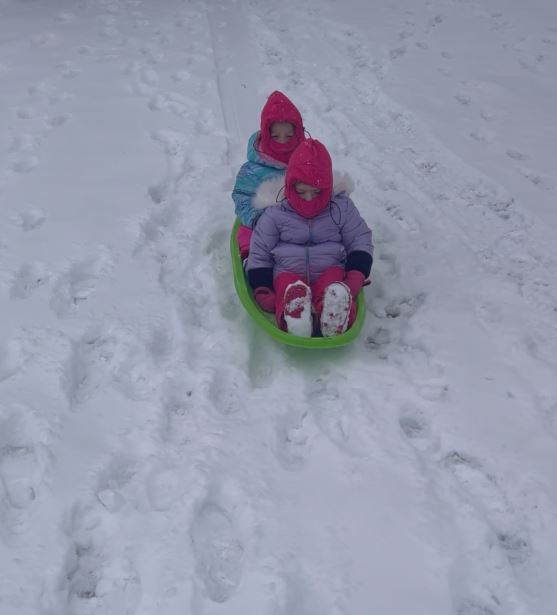As the weather warms up, it’s important to be aware of how to keep children (and ourselves!) safe in heat and humidity. When the heat index (“feels like”) is over 90° F, children are particularly vulnerable to heat-related conditions.
This chart from the National Weather Service shows both how the heat index is calculated, and when temperatures become hazardous.
Some Ways to Keep Children Safe in Heat (tips from the CDC and HealthyChildren.org):
- Move outdoor time to early in the day, before the sun is high.
- Apply and re-apply sunscreen– sunburn can cause dehydration and prevent the body from regulating temperature appropriately. Sunscreen is important for people of all ethnicities and skin tones.
- Have drinking water accessible at all times, and encourage (and model!) frequent water breaks.
- Recommend that families dress in loose, lightweight, and light-colored clothing. Use UV protective clothing and sun hats for extra safety.
- Keep cool with safe water play. A sprinkler, misting bottles, or water table can all help regulate body temperature and keep everyone in a good mood.
- Know the signs of heat-related illness and be prepared to act accordingly.
The winter season brings with it added hazards. Child care providers can take steps to keep children safe from winter hazards.
Children need extra protection from cold weather as they are not able to regulate their body temperature. It’s vital that children wear appropriate clothing for the weather.
- Wear layers of loose-fitting, lightweight clothing
- Wear a hat, coat, and gloves/mittens
- Caregivers should check children’s extremities for normal color and warmth at least every 15 minutes
This infographic created by the National Weather Service serves as a great tool to help guide what clothing is needed in the cold weather.
For many of us, winter is sticking around for a few more weeks, which means more fun in the snow. Remember, there is no such thing as bad weather; there is just bad clothing.
Playing outside during cold weather is very beneficial for children.
It builds resilience, helping children learn to cope with uncomfortable or challenging situations, and builds mental and emotional strength.
It improves creativity and imagination; being outside provides endless imaginative play and exploration opportunities.
It promotes physical activity, playing in the snow, and engaging in winter sports like sledding, skating, and skiing supports physical activity and healthy habits.
Lastly, it enhances sensory experiences; snow, and ice provide unique sensory experiences that stimulate and calm the senses, helping children develop sensory integration skills.
Stephanie McKinstry owner of Caterpillar Clubhouse Nature Preschool, shares some fun photos of her program enjoying the snow!







